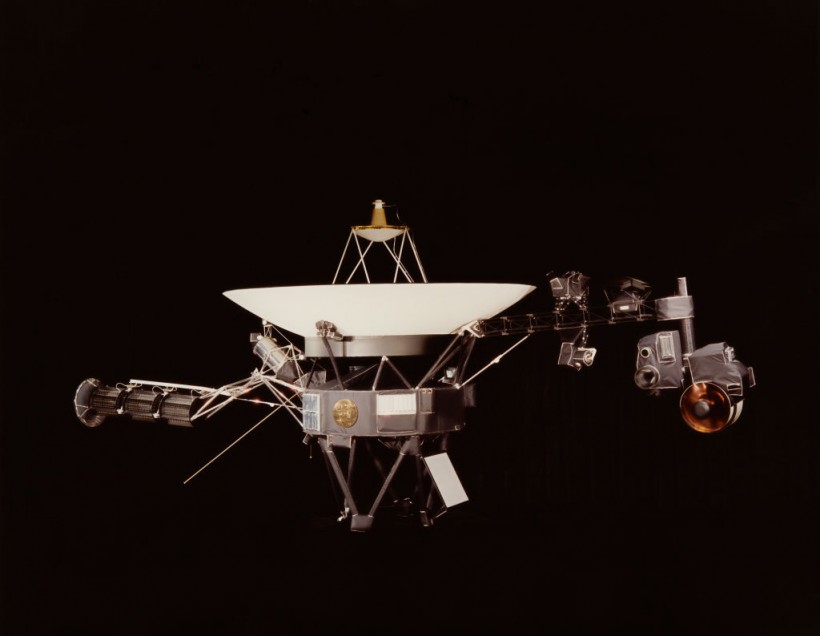At present, NASA is experiencing a temporary loss of communication with Voyager 2, the second-farthest human-made object from Earth, as it journeys through interstellar space approximately 12.3 billion miles away from home.

A NASA image of one of the Voyager space probes. Voyager 1 and its identical sister craft Voyager 2 were launched in 1977 to study the outer Solar System and eventually interstellar space.
NASA Accidentally Lost Contact With Voyager 2
NASA's Jet Propulsion Laboratory reported that scientists lost communication with Voyager 2 on July 21 due to planned commands unintentionally altering the probe's antenna orientation by approximately two degrees. Consequently, Voyager 2 is unable to send or receive messages through NASA's Deep Space Network, leaving it isolated in the darkness of space.
Fortunately, NASA expects the radio blackout to be temporary as Voyager 2 is designed to realign its antenna periodically. The next realignment is planned for October 15, anticipating a resumption of communication with the probe at that time.
The course of Voyager 2 is projected to remain unaltered, according to the American space agency. The probe is presently 32 billion kilometers distant from Earth and travelling away at a pace of 15 kilometers per second.
Fortunately, the glitch does not affect Voyager 1. As per The Register, Voyager 1 is currently about 24 billion kilometers away from Earth, moving at 17 kilometers per second, and maintaining communication with Earth.
Earlier this year, adjustments were made to Voyager 2's electrical systems in the hope of prolonging its operational life. However, this is not the first time the spacecraft has faced communication issues during its extensive mission. Back in April 1978, Voyager 2's primary radio receiver malfunctioned, and it has since been relying on its backup system.
According to Metro, the space probe is outfitted with a large 3.7-meter wide high-gain antenna, enabling communication through both S band (13 cm wavelength) and X band (3.6 cm wavelength) channels with the Deep Space Network.
At its current location, it takes approximately 17.5 hours for the spacecraft's signals to reach Earth, but this duration lengthens as the spacecraft moves farther from Earth.
READ ALSO: Voyager 2 Successfully Reaches the Interstellar Boundary
Voyager Probes Explore Interstellar Space
The twin Voyager spacecraft were launched 16 days apart in August and September 1977, Live Science reported. Voyager 2 was launched before Voyager 1, contrary to intuition. Both probes conducted flybys of outer solar system planets before crossing the heliosphere, the outermost layer of the sun's atmosphere that marks the boundary between our solar system and interstellar space.
Voyager 1 entered interstellar space in August 2012, becoming the farthest human-made object from Earth, currently located around 14.8 billion miles (23.8 billion km) away and continuously moving farther. Communication with Voyager 1 remains unaffected.
NASA states that both Voyagers have enough electrical power and fuel to continue their operations until at least 2025. However, when the day comes that communication with Earth is inevitably lost, their mission will endure.
Each probe carries a gold-plated copper disk, called the Voyager Golden Record, which serves as an audio postcard meant to share Earth's natural and musical heritage with potential intelligent extraterrestrial beings who may encounter the probes one day. The albums include 27 musical compositions by Bach and Chuck Berry, 22 minutes of natural noises, and people speaking in 59 different languages.
They are also equipped with an audio player containing pictorial instructions and a star map pinpointing Earth's location. Whether or not they will ever be found remains a question for the distant future.
RELATED ARTICLE: NASA Finally Reconnects With Voyager 2 Space Probe After Almost a Year of Silence
Check out more news and information on Space on Science Times.










!['Cosmic Glitch' in Einstein's Theory of General Relativity Could Be Explained in This New Scientific Tweak [Study]](https://1721181113.rsc.cdn77.org/data/thumbs/full/53435/258/146/50/40/cosmic-glitch-in-einsteins-theory-of-general-relativity-could-be-explained-in-this-new-scientific-tweak-study.jpeg)



